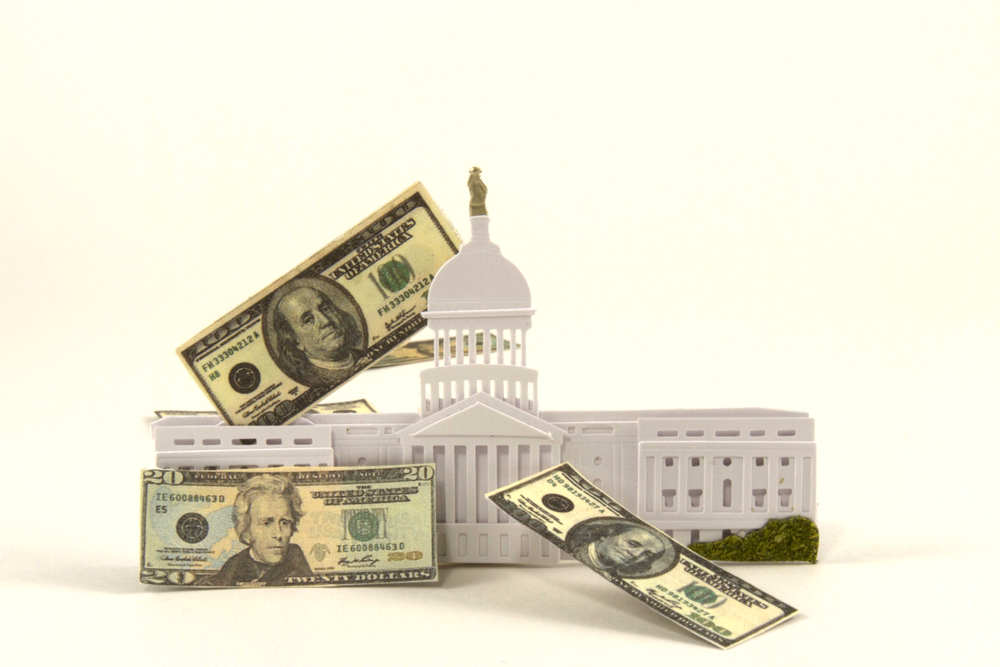Today is Tax Day. The Ides of April.
Time to square up the accounts with Uncle Sam.
But the feds always have an ace up their sleeves and a rabbit under their hats…
No real cut
As we showed last week, the Trump tax cut was no real cut at all. The average person will save less than 2% on his tax bill. But his real cost of government went up — 10 times as fast.
The latest budget proposal calls for a 20% increase over Obama-era spending, with $2 trillion more in debt added in the last 24 months.
As David Ricardo demonstrated 200 years ago, the cost is the same, whether it is taken from people directly in taxes, or embezzled from them in the form of debt.
But as the number of PhD economists has gone up, the public’s awareness of basic economics has gone down.
Now, people are ready to believe six impossible things before breakfast. They think that, somehow, the Fed will take care of it…or that the rich will pay it…or that we will grow our way out of it.
None of those things will happen. Instead, the tax cut was a typical win-lose deal from the feds, taking money from the many to pay off the few. The winners were people who owned businesses, such as your editor. We benefited from substantial tax reductions.
The losers were middle-income consumers and taxpayers…who will eventually pay higher taxes, higher prices, with lower incomes.
And the bill is coming due remarkably fast.
[openx slug=inpost]
Making payments
A report in Bloomberg suggests that upper middle-income taxpayers are already making payments:
‘Newly available net worth data from the Federal Reserve suggests that the “left-behind” contagion has spread to all Americans aside from the top 10 percent. While still wealthier overall than most other groups, even the upper-middle class is feeling the pinch of income stagnation. The growth rate of this group’s incomes is lagging behind that of those both lower and higher on the socioeconomic ladder.
‘The cost of many products and services the upper middle class buys, from autos to college educations, is outpacing overall inflation. While having access to credit, these households are increasingly tapping into costlier forms of debt.’
Here at the Diary, our outlook is simple. Wealth comes from win-win deals. The more you prevent people from doing win-win deals — by regulations, taxes, fake money, distorted interest rates, trade barriers, QE, and debt — the less wealth you get.
There’s no mystery to it.
The more the feds stymie, stifle, and pretend to stimulate the economy…the more they cause it to stagnate. That is what is happening in the US, now. Growth rates are only half of those of the 1950s-1970s. And real wages — properly measured — are lower than they were in 1975.
Progress slowed down, despite infinitely more of all the things that are supposed to speed it up — PhDs in all disciplines, think tanks, research facilities, accumulated technology, abundant capital, and stimulus up the wazoo.
Stimulus fraud
Most of those things are simply irrelevant. But stimulus in all its forms is a fraud. The feds claim, for example, that the economy needs precisely 2% inflation to keep it properly juiced.
But look at the two periods of highest growth, the late 19th century and the 1950s; there was no inflation at all in the former and only about 1% in the latter.
And if inflation really did stimulate an economy, Venezuela should have the heebie jeebies, running berserk with growth. It has inflation of about 2 million percent. Argentina — with inflation estimated at about 100% — shouldn’t be doing badly, either. Both, of course, are in severe downturns.
Inflation doesn’t stimulate an economy any more than phony tax cuts, phony interest rates, or counterfeit money.
It is just another way the feds cheat the public for the benefit of the insiders. We’ve seen how the tax cut ripped off middle-income taxpayers.
Even low levels of inflation work the same way. The insiders use low-interest loans to speculate on rising asset prices.
But the public has to pay higher and higher prices. Even the upper reaches of the middle class are finding it impossible to keep up.
At the lower end, they don’t even try.
Regards,
Bill Bonner
